#corvette stingray ZL-1
Photo
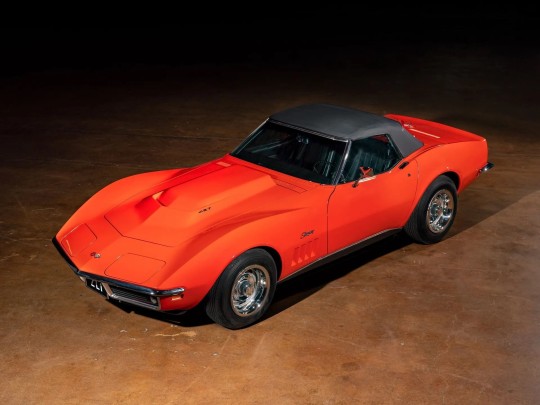

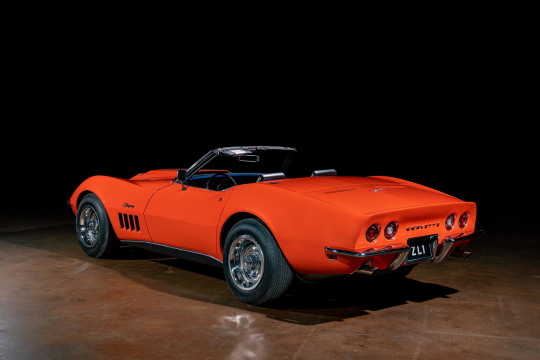
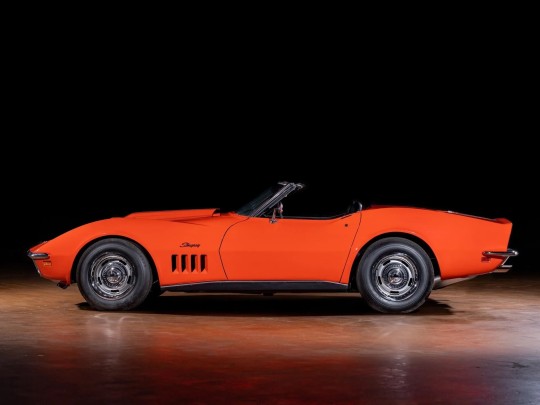
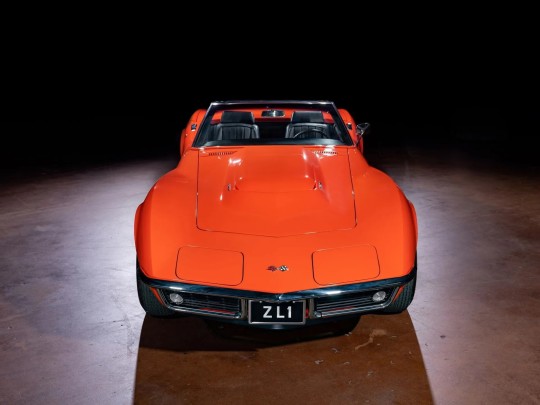

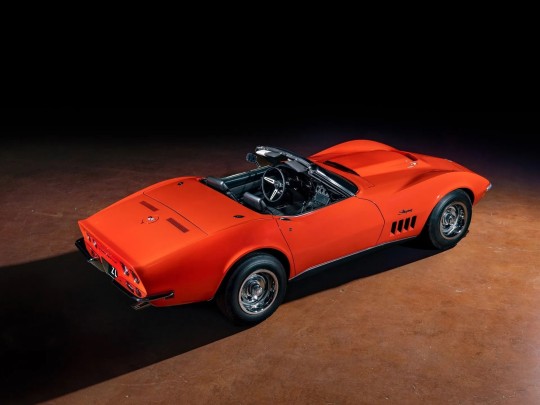
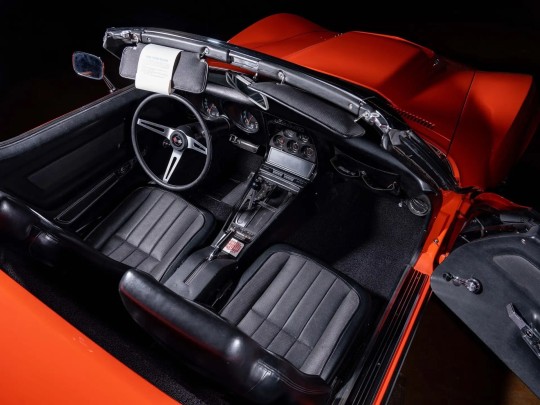
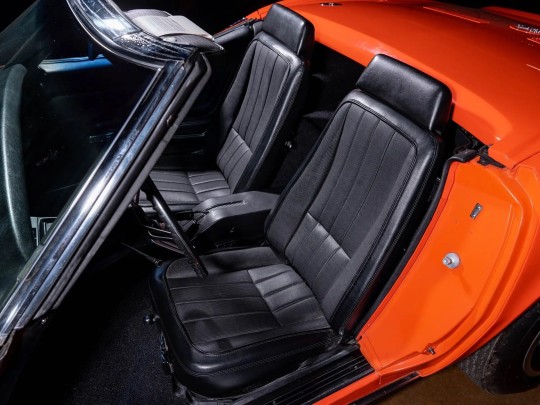

1969 Corvette Stingray ZL-1 Convertible
this particular example was “strictly developed as an FIA/NHRA homologation experiment” and is the first of two factory-documented Corvettes with the high-performance RPO ZL-1 option—an aluminum version of Chevrolet’s monstrous 427-cubic-inch L88 V-8 engine. (The second model was a coupe.)
The bright-orange convertible was then sold to drag racer John W. Maher of Leechburg, Pennsylvania, in December 1968, coupled with an M40 automatic transmission. At the time, the $4,718 package more than doubled the base price of a new Corvette.
The vehicle remained in the driver’s possession until 2007 when it was sold to Kevin Mackay’s Corvette Repair Inc., which then had the convertible fully restored in 2014 and installed an early, factory-correct, date-coded, all-aluminum ZL-1 unit.
Courtesy: RM Sotheby’s
#art#design#spotycars#sportcar#vintagecars#vinatgecar#corvette#orange#1969#corvette stingray ZL-1#convertible#luxurycars#luxurycar#luxurylifestyle#rm sotheby's#ZL-1
197 notes
·
View notes
Text




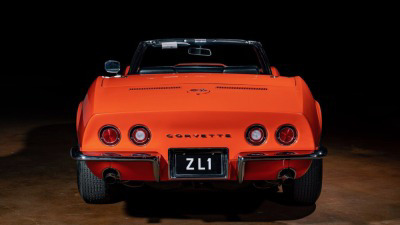


1969 Chevrolet Corvette Stingray ZL-1 Convertible
#1969 Chevrolet Corvette Stingray ZL-1 Convertible#car#cars#muscle car#american muscle#Chevrolet Corvette Stingray#chevrolet corvette#chevrolet#corvette#convertible#chevy
313 notes
·
View notes
Photo


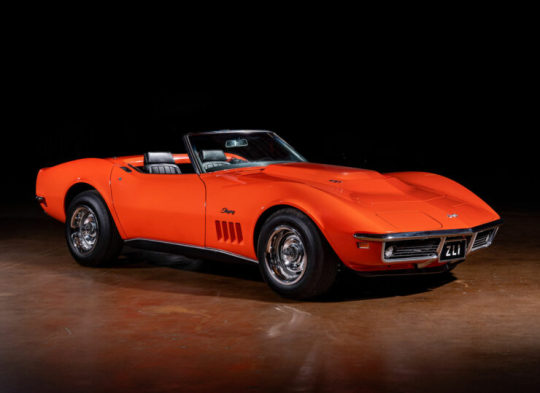
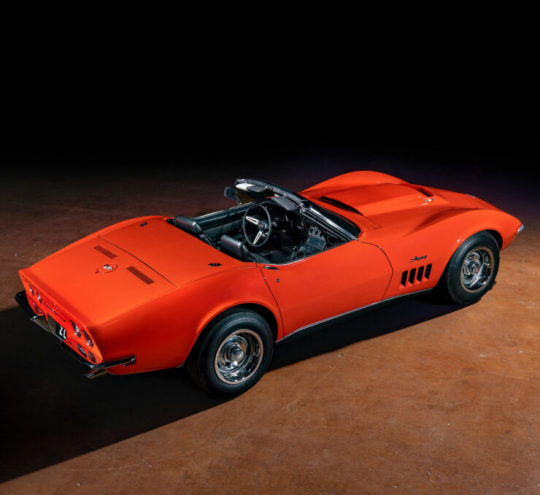
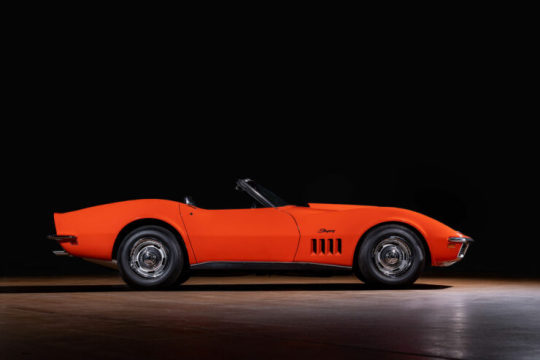
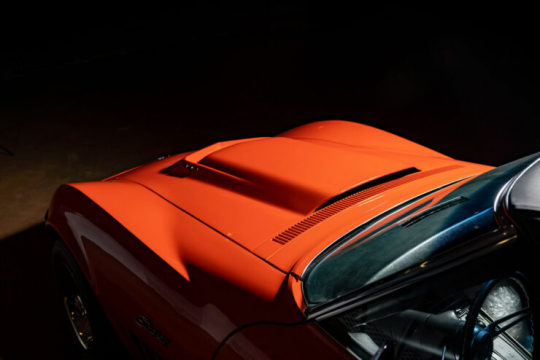
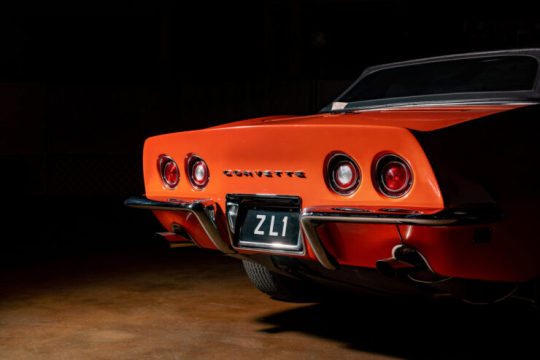

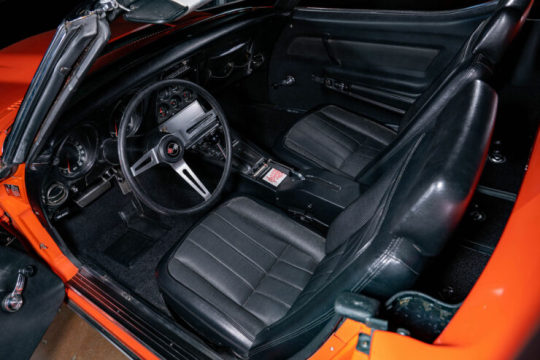
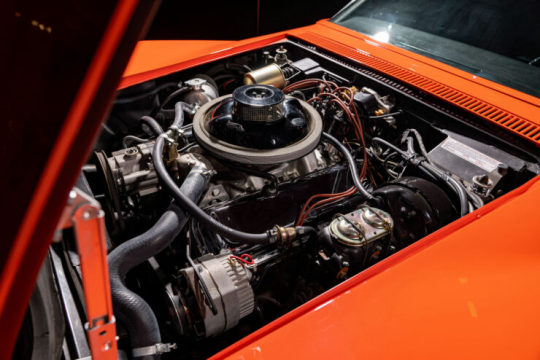
Chevrolet Corvette Stingray ZL-1 (1 of 2).
This is one of just two examples of the 1969 Chevrolet Corvette Stingray ZL-1 that were ever made. The ZL-1 was remarkable for a few reasons but most famous for what was under the hood – an all aluminum 560 bhp 427 cubic inch V8 derived from the Can Am racing engine. If it wasn’t the fastest street legal production car Chevrolet had ever made up until that point in history, it was certainly one of them. The Corvette Stingray ZL-1 was powered by a roaring V8 that had been developed not for road use, but to power the mighty V8 Can Am race cars of the 1960s.Weight reduction being key in the world of racing, the engine was given an aluminum alloy block and heads, shaving significant weight off the original 427 V8.Inside you would find stronger connecting rods, a redesigned crankshaft, new pistons, larger exhaust valves, a high-lift camshaft, and an upgraded “open chamber” aluminum cylinder-head design with four additional head bolts.The ZL-1 was the most powerful engine Chevrolet had created up until that point in history, in road trim it was capable of 560 bhp – an astonishing figure for the 1960s and still more than most supercars would be producing 20 years later.
54 notes
·
View notes
Text


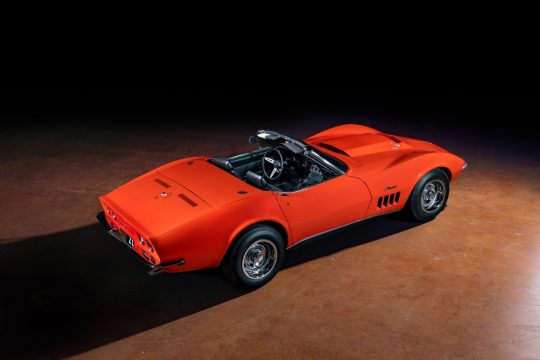
Chevy Corvette Stingray ZL-1 1969. - source Amazing Classic Cars.
75 notes
·
View notes
Text
This 1969 Corvette Stingray ZL-1 Convertible Is the Only One of Its Kind. Now It Can be Yours. — Robb Report
This 1969 Corvette Stingray ZL-1 Convertible Is the Only One of Its Kind. Now It Can be Yours. — Robb Report
The ridiculously rare supercar could fetch up to $3 million—and break the record for the most expensive ‘Vette ever sold at auction.
This 1969 Corvette Stingray ZL-1 Convertible Is the Only One of Its Kind. Now It Can be Yours. — Robb Report
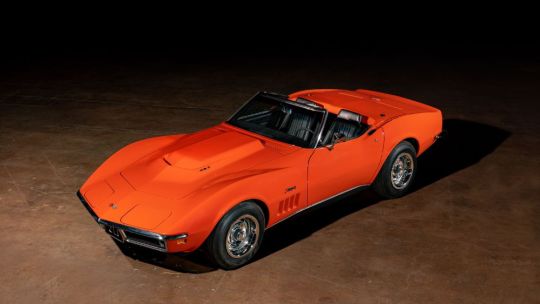
View On WordPress
0 notes
Text
One-of-a-kind Chevrolet Corvette surfaces at auction and could be worth over $3 million
One-of-a-kind Chevrolet Corvette surfaces at auction and could be worth over $3 million
The only 1969 Chevrolet Corvette Stingray ZL-1 convertible ever built is set to be auctioned for the first time in January.
The Monaco Orange car is one of just two that were ordered with the high performance ZL-1 option that year, the other being a coupe.
The ZL-1 package was built around a version of the legendary L-88 427 cubic-inch V8 engine that was developed for Can-Am racing.
The monster…

View On WordPress
0 notes
Photo

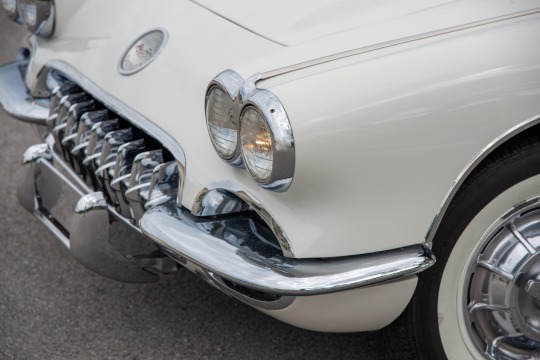
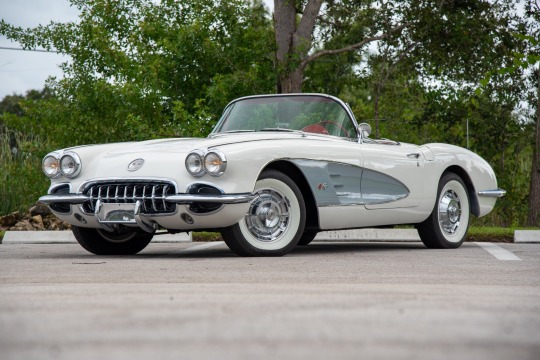
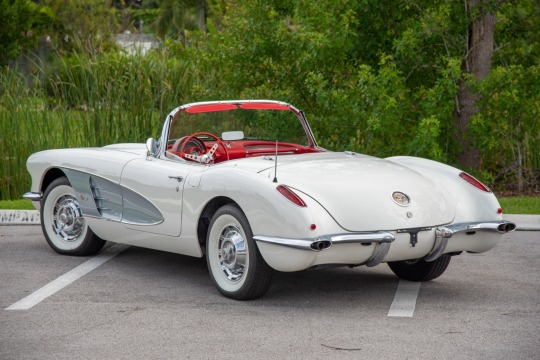

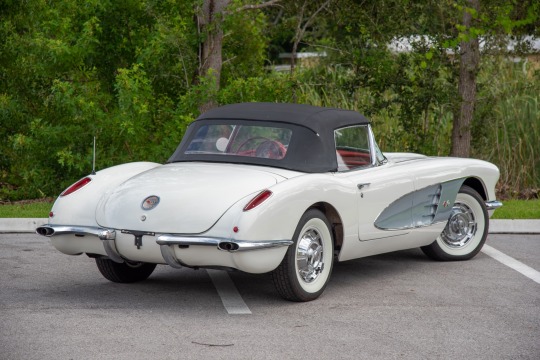

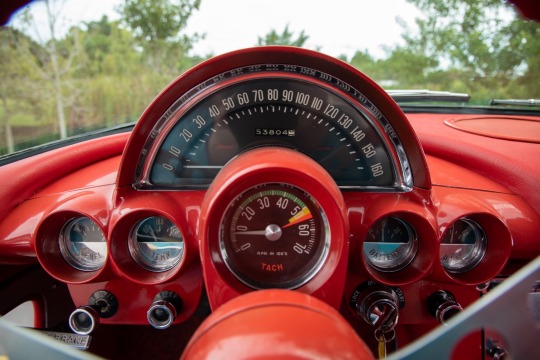
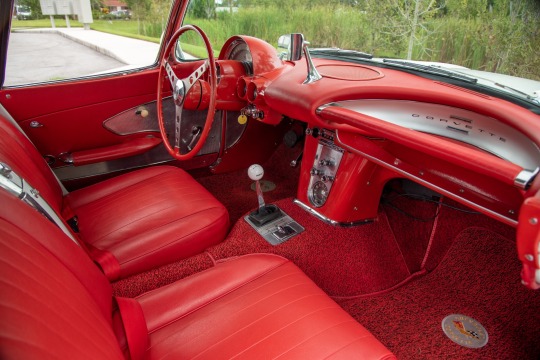
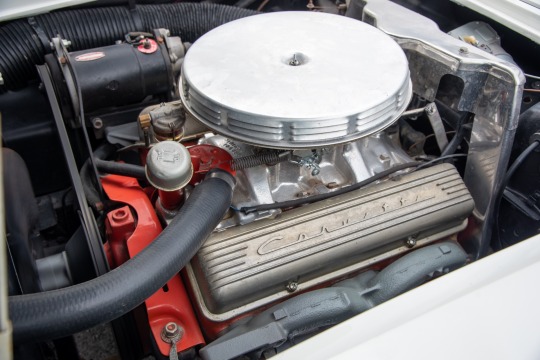
1969 Chevy Corvette ZL-1 Engine Produced Between 560 and 585 HP
Chevrolet released the ZL1 engine beyond the halfway point during 1969 with intentions to replace the L88 version
An aluminum 427 cubic inch engine that featured a dry sump oil system, stouter connecting rods and open chamber heads, officially rated at 430 horsepower but produced between 560 and 585 when fully loaded with
all the available options
Equipped with the ZL-1 power thrusting engine mclaren racers dominated the can-am series from 1968-71, winning 32 of the 37 events during that time period, the cost $4,718.00 for ZL1 option which was $63.00 less than base model
corvette coupe, $10.048.15 total cost for a corvette that could melt rubber at any redlight
Just two ZL-1 corvettes were sold by chevrolet, records from the tonawanda engine plant indicate their were 94 ZL1 engines with corvette prefixes produced, 80 were manual transmission and 14 with automatics
The 69 chevy corvette with the ZL-1 engine was capable of 0-60 in 4.0 seconds and quarter mile time @ 12.1 seconds going 116 miles per hour
The ZL1 corvette adventure was stopped after just one year of production, stricter EPA guidelines introduced in 1970 targeted automobiles producing musclecar power
The ZL1 engine was purchased for racing purposes and two corvette models with ZL1 option package were sold through general motors ordering system, one was yellow and the other was white
Chevy needed to build 50 models to satisfy the NHRA guidelines, 69 stingray models were finished, at least 12 ZL1 engines were removed and sold separately, 20 ZL1 vettes were sold to interested drag racers, about 30 unsold cars were returned
to general motors whom sold them during the early part of the 70s
Another automobile with conflicting stories long after its initial release, as for standard corvettes 38,762 were produced, 16,633 convertibles, 22,129 were coupes
Auction price for a surviving ZL1 sting ray corvette in excellent condition could cost $1,150,000
3 notes
·
View notes
Photo


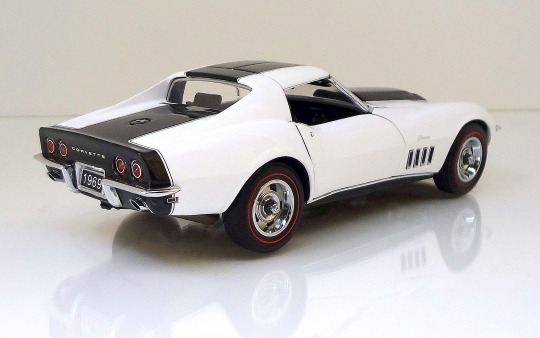
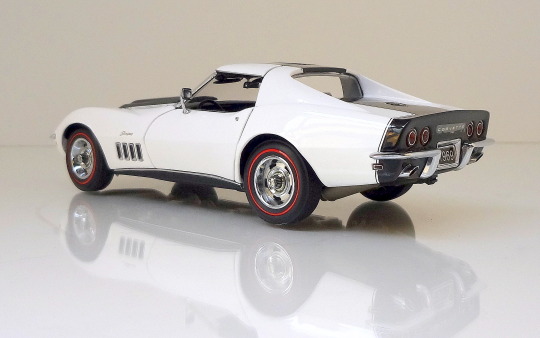
1969 Chevrolet Corvette Stingray ZL-1 Sport Coupe
A 1:24 scale model issued by Danbury Mint in 2005. It is finished in Can-Am White & Black.
14 notes
·
View notes
Photo

FRANKLIN MINT 1969 CHEVY CORVETTE ZL-1 STINGRAY LE 1:24 Diecast Model Car VETTE https://ift.tt/2CdivxF
0 notes
Photo
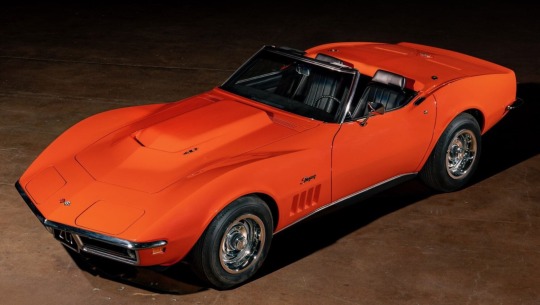


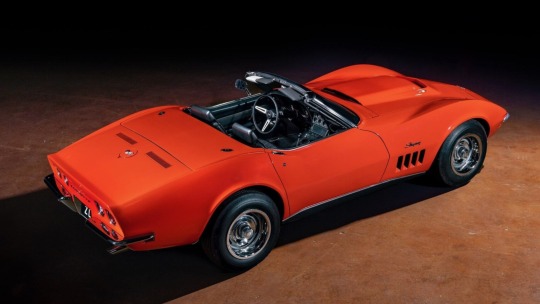
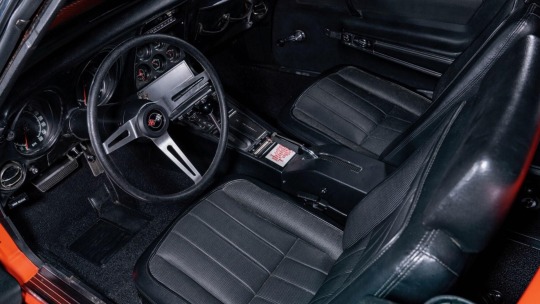
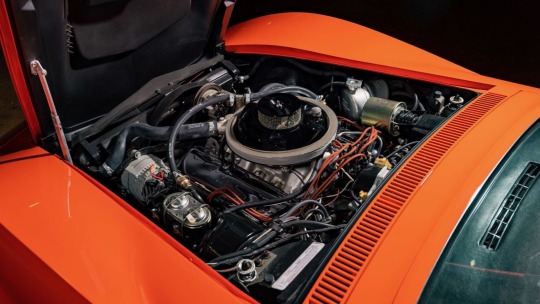

1969 Chevrolet Corvette Stingray ZL-1 Convertible
RM Sotheby's
#art#design#sportcars#sportcar#vintagecar#vintagecars#chevrolet#chevrolet stingray#convertible#august 1969#rm sotheby's#luxurylifestyle#luxurycars#luxurycar#corvette#chevrolet corvette#chevrolet corvette stingray#ZL-1
263 notes
·
View notes
Text
Chevrolet Corvette C3 History: It Saw the End of an Era and Braved a New One
In this installment of Corvette history, we swim with the “Shark,” a name synonymous with the C3 Corvette. This car was met with mixed reviews when it made its debut in 1968 and braved the endless changes in emissions regulations of the ‘70s and ‘80s. Development of the C3 Corvette began before the big-block C2s even came out! GM and the Corvette’s designers knew that they couldn’t let the C2 have as long a production run as the C1, which ran for 10 years. So, they set up an in-house design competition with one stipulation: have the car ready for the 1967 model year.
This article was originally featured on HOT ROD. For more stories like this, check out the HOT ROD Network. Interested in the 2020 Corvette Stingray? Get the full story on the C8 here.
Two teams quickly emerged, one lead by Zora Arkus-Duntov and the other by the Chevrolet Engineering Center’s director, Frank Winchell. A mid-engine car had been a conversation topic since the early ‘50s, and though these two men’s opinions on specifics differed, both team’s designs revolved around a mid/rear-engine platform. They drew upon inspiration from the Corvair and European cars of the time, like the Porsche 911 and Lamborghini Miura.
Bill Mitchell, one of the integral leaders of the C2 Corvette, wanted in and formed his own design team. The three teams were all fighting the same fight with different styles. Zora and Mitchell pulled from the early Mako Shark I concepts, and Winchell referenced the Corvair. The swooping lines and sharp edges of the concepts made for stunning artistic installations; however, the cars were all proving to be impractical in their design and difficult mechanically. With the limited technology of the times and parts available to them, coupled with cost constraints, none of the teams were able to make a design work, and the mid/rear-engine concepts were scrapped.
Bill Mitchell turned around and solicited the help of designer Larry Shinoda, and together they created a concept that went straight from the drafting table to full-size model. The design was adaptable to work with a front or mid-engine layout and was passed through the Chevrolet’s design department which cranked out the Mako Shark II concept car. It began the auto show circuit in the middle of C2 production, hinting at the Corvette of the future.
The car was receiving mixed reviews. Despite the underpinnings of the car being essentially the same as the tried and true C2, the car was immediately met with problems. The wedged nose and ducktail rear wing created excessive front-end lift (an issue that plagued the early concepts of Frank Winchell). Cooling was also a problem. The narrow body style carried through to the engine bay which heat-soaked the motor. With such a small nose, the radiator was not getting enough airflow, perpetuating the issue. Overheating problems remained a thorn in the side of the C3 from the sale of the first cars all the way to the end of production.
The concept C3s had squeaky roofs due to chassis flex because of the removable one-piece roof. The center roof beam was added to increase rigidity in the roof and thereby created the iconic T-Top. The convertible optioned cars did not have this problem. With these and other issues piling up, the production of the C3 was delayed a whole year to 1968. Once the car officially went on sale, it was apparent that the build quality of the cars was lacking compared to the previous years and other cars on the market. The mixed reviews remained as the styling was criticized for being too extreme and even the T-Tops weren’t as exciting as GM had hoped. A high note was the tremendous straight-line performance numbers of the big-block cars and on-track fun of the sub-400-hp small-block cars.
The 1968-’69 models carried nearly everything over from the C2, with only minor changes to the fit the new design. 1969 did see the arrival of the first ZL-1 car that featured an all-aluminum 427ci big block. The engine was rated by the factory at 430 hp however, according to Corvette Legends and Corvsport, they could actually make more in the neighborhood of 580 hp with the stock manifolds ditched for headers. The crazy engines didn’t stop there. In 1970, the new solid-lifter LT-1 engine was introduced which boosted the C3’s performance such that the Sports Car Club of America (SCCA) deemed it eligible to run in their Class B Production class. Essentially, racing enthusiasts could, if they selected the right options, by a factory-prepped, race-ready Corvette in 1970.
Read about this 1969 Chevrolet Corvette LT-2, the stillborn supercar, right here.
By 1972, the car was getting tamed a bit, with touring and road comfort being the focus. The chrome front bumpers would go away in favor of increase crash safety ratings. The molded bumper and taillights arrived in 1974 for the same reasons. Away went one of the coolest features on any car ever: the vacuum actuated windshield wiper door. Like many other cars in the 70s, big engines were getting choked out by the EPA’s emission’s regulations. The small-block cars made between 190 and 250 horsepower, and the behemoth 454 was down to 275 hp.
Despite early criticism, the car received more praise as time went on, as the typical growing pains of a new car following a highly successful model (the C2) seemed to be wearing off. We considered the LS4 454 roadster models of 1973-74 to be among the “10 Best Muscle Car Buys” in the January 1986 issue of HOT ROD!
Come 1975, and you get the catalytic converter to keep “Captain Planet” happy. A steel floor was added the following year to keep that emissions device from heating up the cockpit. Fast forward to 1978, and to the 25th anniversary of the Corvette; which had fancy silver visual treatments to indicate the celebration. Power accessories like locks and windows started becoming available too.
In the 1980s, tilt columns and A/C became standard equipment, along with more emissions controls. California cars had lower horsepower ratings compared to other states because of pollution legislation. In response to this (and probably to make the car still feel fast) Chevrolet took weight-saving measures with the use of aluminum. In 1981, the only available engine was the 350, and in ’82, the C3’s last year of production, it was outfitted with the infamous Cross-Fire injection.
The ‘70s and ‘80s were a dark time for the American car market and as demonstrated by the C3 Corvette, Chevrolet and GM did all they could to maintain the badge’s prowess as a desirable performance car. While cars like the Camaro were meeting their demise, the Corvette soldiered on, braved the storm, and came out on the other side.
The post Chevrolet Corvette C3 History: It Saw the End of an Era and Braved a New One appeared first on MotorTrend.
via RSSMix.com Mix ID 8134279 https://ift.tt/2KQmqB8
0 notes
Photo

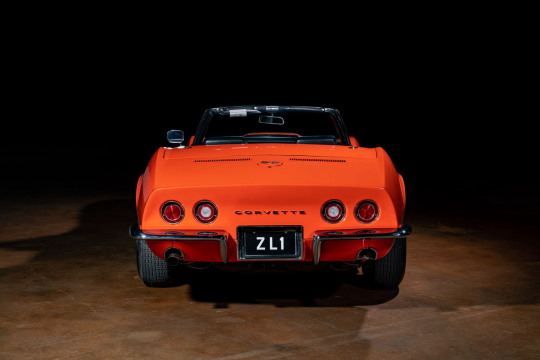







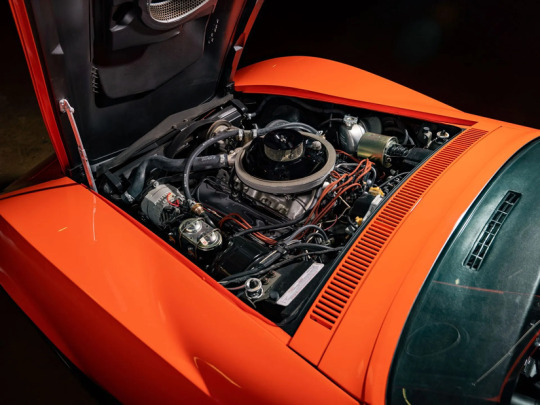
Chevrolet Corvette Stingray ZL-1 Convertible (1 of 1)
The Chevrolet Corvette is a historic car for a number of reasons but very few are as special as this 1969 example. It’s one of two factory-built aluminum 427 ZL-1 Corvettes ever made. And it’s the only one with a convertible drop top.1969 was a special year for the Corvette but even many die-hard Vette fans don’t know about this car. A very special factory option code, RPO ZL-1, cost $4,718 on its own and more than doubled the price of the car. For that hefty sum, the owner got a street-legal version of the 427ci all-aluminum V8 engine from CanAm racing under the hood.The resulting 560 hp (417 kW) is fed through an M40 automatic transmission and then straight to the rear wheels. This isn’t just a normal Corvette with a racing-related drivetrain though. The brakes and suspension were upgraded too. The car was stripped of creature comforts too. The radio, heater, AC, power windows, and power steering are all absent in the car.
18 notes
·
View notes
Photo

Corvette Stingray ZL-1 1969. 📸 RM Sotheby's. - source Rétro Passion Automobiles.
67 notes
·
View notes
Text
Chevrolet Corvette C3 History: It Saw the End of an Era and Braved a New One
In this installment of Corvette history, we swim with the “Shark,” a name synonymous with the C3 Corvette. This car was met with mixed reviews when it made its debut in 1968 and braved the endless changes in emissions regulations of the ‘70s and ‘80s. Development of the C3 Corvette began before the big-block C2s even came out! GM and the Corvette’s designers knew that they couldn’t let the C2 have as long a production run as the C1, which ran for 10 years. So, they set up an in-house design competition with one stipulation: have the car ready for the 1967 model year.
This article was originally featured on HOT ROD. For more stories like this, check out the HOT ROD Network. Interested in the 2020 Corvette Stingray? Get the full story on the C8 here.
Two teams quickly emerged, one lead by Zora Arkus-Duntov and the other by the Chevrolet Engineering Center’s director, Frank Winchell. A mid-engine car had been a conversation topic since the early ‘50s, and though these two men’s opinions on specifics differed, both team’s designs revolved around a mid/rear-engine platform. They drew upon inspiration from the Corvair and European cars of the time, like the Porsche 911 and Lamborghini Miura.
Bill Mitchell, one of the integral leaders of the C2 Corvette, wanted in and formed his own design team. The three teams were all fighting the same fight with different styles. Zora and Mitchell pulled from the early Mako Shark I concepts, and Winchell referenced the Corvair. The swooping lines and sharp edges of the concepts made for stunning artistic installations; however, the cars were all proving to be impractical in their design and difficult mechanically. With the limited technology of the times and parts available to them, coupled with cost constraints, none of the teams were able to make a design work, and the mid/rear-engine concepts were scrapped.
Bill Mitchell turned around and solicited the help of designer Larry Shinoda, and together they created a concept that went straight from the drafting table to full-size model. The design was adaptable to work with a front or mid-engine layout and was passed through the Chevrolet’s design department which cranked out the Mako Shark II concept car. It began the auto show circuit in the middle of C2 production, hinting at the Corvette of the future.
The car was receiving mixed reviews. Despite the underpinnings of the car being essentially the same as the tried and true C2, the car was immediately met with problems. The wedged nose and ducktail rear wing created excessive front-end lift (an issue that plagued the early concepts of Frank Winchell). Cooling was also a problem. The narrow body style carried through to the engine bay which heat-soaked the motor. With such a small nose, the radiator was not getting enough airflow, perpetuating the issue. Overheating problems remained a thorn in the side of the C3 from the sale of the first cars all the way to the end of production.
The concept C3s had squeaky roofs due to chassis flex because of the removable one-piece roof. The center roof beam was added to increase rigidity in the roof and thereby created the iconic T-Top. The convertible optioned cars did not have this problem. With these and other issues piling up, the production of the C3 was delayed a whole year to 1968. Once the car officially went on sale, it was apparent that the build quality of the cars was lacking compared to the previous years and other cars on the market. The mixed reviews remained as the styling was criticized for being too extreme and even the T-Tops weren’t as exciting as GM had hoped. A high note was the tremendous straight-line performance numbers of the big-block cars and on-track fun of the sub-400-hp small-block cars.
The 1968-’69 models carried nearly everything over from the C2, with only minor changes to the fit the new design. 1969 did see the arrival of the first ZL-1 car that featured an all-aluminum 427ci big block. The engine was rated by the factory at 430 hp however, according to Corvette Legends and Corvsport, they could actually make more in the neighborhood of 580 hp with the stock manifolds ditched for headers. The crazy engines didn’t stop there. In 1970, the new solid-lifter LT-1 engine was introduced which boosted the C3’s performance such that the Sports Car Club of America (SCCA) deemed it eligible to run in their Class B Production class. Essentially, racing enthusiasts could, if they selected the right options, by a factory-prepped, race-ready Corvette in 1970.
Read about this 1969 Chevrolet Corvette LT-2, the stillborn supercar, right here.
By 1972, the car was getting tamed a bit, with touring and road comfort being the focus. The chrome front bumpers would go away in favor of increase crash safety ratings. The molded bumper and taillights arrived in 1974 for the same reasons. Away went one of the coolest features on any car ever: the vacuum actuated windshield wiper door. Like many other cars in the 70s, big engines were getting choked out by the EPA’s emission’s regulations. The small-block cars made between 190 and 250 horsepower, and the behemoth 454 was down to 275 hp.
Despite early criticism, the car received more praise as time went on, as the typical growing pains of a new car following a highly successful model (the C2) seemed to be wearing off. We considered the LS4 454 roadster models of 1973-74 to be among the “10 Best Muscle Car Buys” in the January 1986 issue of HOT ROD!
Come 1975, and you get the catalytic converter to keep “Captain Planet” happy. A steel floor was added the following year to keep that emissions device from heating up the cockpit. Fast forward to 1978, and to the 25th anniversary of the Corvette; which had fancy silver visual treatments to indicate the celebration. Power accessories like locks and windows started becoming available too.
In the 1980s, tilt columns and A/C became standard equipment, along with more emissions controls. California cars had lower horsepower ratings compared to other states because of pollution legislation. In response to this (and probably to make the car still feel fast) Chevrolet took weight-saving measures with the use of aluminum. In 1981, the only available engine was the 350, and in ’82, the C3’s last year of production, it was outfitted with the infamous Cross-Fire injection.
The ‘70s and ‘80s were a dark time for the American car market and as demonstrated by the C3 Corvette, Chevrolet and GM did all they could to maintain the badge’s prowess as a desirable performance car. While cars like the Camaro were meeting their demise, the Corvette soldiered on, braved the storm, and came out on the other side.
The post Chevrolet Corvette C3 History: It Saw the End of an Era and Braved a New One appeared first on MotorTrend.
https://www.motortrend.com/news/chevrolet-corvette-history-c3/ visto antes em https://www.motortrend.com
0 notes
Photo
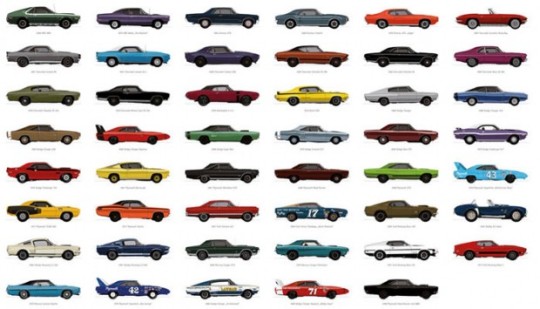
New Post has been published on http://fastmusclecar.com/best-muscle-cars/the-ultimate-list-of-american-muscle-cars/
The Ultimate List of American Muscle Cars
By Dave Ashton
Phew, I’ve been a busy little bunny putting this list together for you all for the ultimate muscle cars list, mainly so you can quickly find each muscle car more easily on the website.
You can find all this information very easily via the website ‘search,’ but there is nothing like seeing a list of information, finding the bits you want and expanded on that information.
If there are any omissions here, please leave a comment and we will add the vehicle, so this becomes the best online resource for finding your favorite muscle cars.
If you need any parts for your muscle car, visit our Muscle Car Parts page. We have a nice list of suppliers who specialize in the most common muscle car parts and some of the more rare types.
We also compile our daily finds of the best muscle cars buys, which you can find on our home page daily or a complete listings here.
You can use the list below for your own research, muscle car prices, muscle car news or just to look at some cool muscle car pictures!
Full-size Muscle Cars
1962–1970 Buick Wildcat
1966–1973 Buick Riviera GS until 1972, then Riviera GS Stage 1 models
1965–1974 Chevrolet Impala SS until 1969, then any high HP-engined models
1965–1974 Chevrolet Bel Air along with Chevrolet Biscayne and Chevrolet Caprice
1965-1971 Chrysler 300 non-letter series
1960–1973 Dodge Polara along with other full size C Body Vehicles
1965–1974 Ford Galaxie
1962–1967 Mercury S-55 (1964 and 1965 badged as Marauder)
1963–1970 Mercury Marauder (1966 and 1967 as S-55)
1961–1966 Oldsmobile Starfire
1964–1965 Oldsmobile Jetstar I
1969–1974 Plymouth Fury GT
1960–1963 Pontiac Ventura
1964–1972 Pontiac Grand Prix
Mid-size Muscle Cars
1967–1970 AMC Rebel The Machine
1971–1973 AMC Matador The Machine
1965–1972 Buick Skylark Grand Sport & Buick GSX
1965–1973 Chevrolet Chevelle SS
1966–1974 Dodge Charger 500, R/T & SE
1968–1971 Dodge Super Bee
1969 Dodge Charger Daytona
1966–1969 Ford Fairlane GT, GTA, and Cobra
1968–1974 Ford Torino (GT, Cobra, and Talladega)
1966–1972 Mercury Cyclone and Mercury Cyclone Spoiler II
1968–1972 Oldsmobile 442
1968–1972 Oldsmobile Cutlass (“Ram-Rod” 350, Rallye 350, W31, SX)
1967–1971 Plymouth GTX
1968–1974 Plymouth Road Runner
1970 Plymouth Superbird
1964–1973 Pontiac GTO
1968-1971 Pontiac Tempest GT-37
1973-1975 Pontiac Grand Am
1969–1974 Pontiac Grand Prix SJ
Compact Muscle Cars
1969 AMC SC/Rambler
1971 AMC Hornet SC 360
1966–1974 Chevrolet Nova SS
1967–1976 Dodge Dart GT, GTS, Swinger & Demon
1970–1976 Plymouth Duster Gold Duster & Twister
1966–1979 Ford Falcon Sports Coupe
1970–1975 Ford Maverick Grabber
1971–1975 Mercury Comet GT
1973–1974 Oldsmobile Omega S
1973–1974 Buick Apollo GSX
1974 Pontiac GTO
Pony Muscle Cars
1968–1970 AMC AMX
1968–1974 AMC Javelin SST
1967–1974 Chevrolet Camaro RS, Z/28 & SS
1967–1969 Yenko Camaro 427
1969–1974 Dodge Challenger SE, R/T & T/A
1964–1973 Ford Mustang Mach 1, Boss 429, Boss 302 & Boss 351
1965–1970 Shelby Mustang GT350 & GT500
1967–1973 Mercury Cougar GT, XR-7 & Eliminator
1967–1974 Plymouth Barracuda BP, BS & ‘Cuda
1967–1976 Pontiac Firebird Trans Am
A-Z of American Muscle Cars
A
AMC muscle cars
1968–1970 AMC AMX
1968–1974 AMC Javelin SST
1970–1971 AMC Rebel
1970 AMC AMC Rebel
1970–1971 AMC Matador
1969 AMC SC/Rambler
1965-1967 AMC Rambler Marlin
1971 AMC Hornet SC 360
B
Buick muscle cars
1965–1969 Buick Skylark Gran Sport
1963–1993 Buick Riviera
1965–1975 Buick Riviera Gran Sport
1972–1975 Riviera GS Stage 1
1968–1974 Buick Gran Sport and GTX
1962–1970 Buick Wildcat
1968–1969 Buick Gran Sport
1970–1974 Buick GSX
1974 Buick Apollo GSX
1969 Buick GS 400
C
Chevrolet/GM Motors muscle cars
1961–1970 Chevrolet Impala
1965–1973 Chevrolet Chevelle
1965–1973 Chevrolet Chevelle SS
1969 Chevrolet Chevelle SS 396
1970 Chevrolet Chevelle SS 454
1965 Chevrolet Chevelle Malibu SS
1964-1973 Chevrolet El Camino
1967–2002 Chevrolet Camaro
1967–2002 Chevrolet Camaro Z/28
1967–2002 Chevrolet Camaro SS
1967 Chevrolet Camaro RS
1967 Chevrolet Camaro ZL-1
1953-Current Chevrolet Corvette
1962–1976 Chevrolet Nova
1966–1967 Chevrolet II Nova
1969 Chevrolet Nova SS 369
1961–1976 Chevrolet Impala SS
1958–1975 Chevrolet Bel Air
1965–1976 Chevrolet Caprice
1967 Chevrolet Corvette Stingray
1970 Chevrolet Monte Carlo SS 454
Chrysler muscle cars
1965–1974 Chrysler Newport
1955–1965 Chrysler 300 (B 372 engine)
1959–1971 Chrysler Town and Country (B 372 engine)
D
Dodge muscle cars
1962–1965 Dodge Dart
1962–1965 Dodge Dart GT
1962–1965 Dodge Dart GTS
1962–1965 Dodge Dart Swinger
1962–1965 Dodge Dart Demon
1963-1965 Dodge Custom 880
1968–1979, 1965–1966 Dodge Coronet
1970 Dodge Coronet R/T
1966–1974 Dodge Charger
1968 Dodge Charger 440
1969 Dodge Charger Daytona
1969 Dodge Charger 500
1968–1971 Dodge Super Bee
1970–1974 Dodge Challenger
1970 Dodge Challenger R/T
1970 Dodge Challenger T/A
1960–1973 Dodge Polara
1971-1972 Dodge Demon
F
Ford muscle cars
1964–1965 Ford Thunderbolt 427
1959–1969 Ford Galaxie
1966–1969 Ford Fairlane
1968–1974 Ford Torino
1968–1974 Ford Torino (GT, Cobra, and Talladega, Cobra Jet Ram Air 429, Drag Pack )
1969 Ford Torino Talladega
1965–2004 Ford Mustang
1971-1973 Ford Mustang 302
1971-1973 Ford Mustang 351
1967–1971 Ford Mustang Cobra Jet
1969–1973 Ford Mustang Mach 1
1969–1970 Ford Mustang Boss 302
1969 Ford Mustang Boss 429
1971 Ford Mustang Boss 351
1966–1969 Ford Fairlane GT
1966–1969 Ford Fairlane GTA
1966–1969 Ford Fairlane Thunderbolt
1964 Ford Fairlane Thunderbolt 427
1967 Ford fairline 427
1966–1969 Ford Fairlane Cobra
1964–1969 Ford Falcon
1967–1979 Ford Ranchero Truck
1964-1969 Ford GT40
G
GMC muscle cars
1971–1977 GMC Sprint
1978–1987 GMC Caballero
M
Mercury muscle cars
1966–1972 Mercury Cyclone
1967–1970 Mercury Cougar
1968 Mercury Cougar GT-E
1967 – Mercury Cougar XR7
1969–1970 Mercury Cougar Eliminator
1962–1967 Mercury S-55 (1964-1965 Marauder)
1959–1974 Mercury Monterey
1970–1971 Mercury Montego
1964–1977 Mercury Comet
1970 Mercury Cyclone spoiler
O
Oldsmobile muscle cars
1968–1971 Oldsmobile 442
1961–1999 Oldsmobile Cutlass
1968 Oldsmobile Cutlass “Ram-Rod” 350
1969–1970 Oldsmobile Cutlass W-31
1970 Oldsmobile Rallye 350
1974 Oldsmobile Omega S
1970 Oldsmobile 442
1963 Oldsmobile Starfire
P
Plymouth muscle cars
1962–1965 Plymouth Fury 413,
1962–1965 Plymouth Fury 426 Max Wedge
1962–1965 Plymouth Fury 426 Hemi
1963–1976 Plymouth Belvedere
1967 Plymouth Belvedere GTX
1962–1971 Plymouth Sport Fury
1967–1971 Plymouth GTX
1968–1974 Plymouth Road Runner
1968 Plymouth Road Runner 446 BBL
1964–1974 Plymouth Barracuda
1971 Plymouth cuda 383
1970 Plymouth Superbird
1970–1976 Plymouth Duster
Pontiac muscle cars
1961 – 1991 Pontiac Tempest
1962 – 1981 Pontiac Le Mans
1964 – 1974 Pontiac GTO
1964 Pontiac GTO Tri-Power
1970 Pontiac GTO Judge
1967 – 2002 Pontiac Firebird
1967 – 2002 Pontiac Trans Am
1950-1981 Pontiac Catalina
S
Shelby muscle cars
1965–1970 Shelby Mustang GT350
1965–1970 Shelby Mustang GT350H
1965–1970 Shelby Mustang GT350R
1965–1970 Shelby Mustang GT500
1965 Shelby AC Cobra
Also, check out a good review of the Best car multimeter on the market and other car parts.
Click for More Muscle Cars For Sale – http://fastmusclecar.com/muscle-car-for-sale/
0 notes